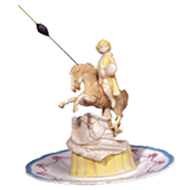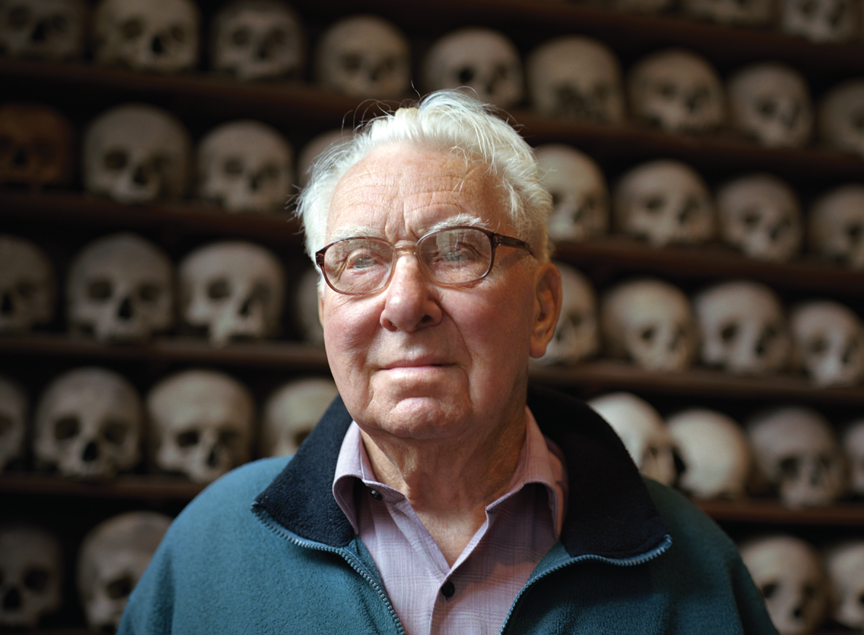The uncanny Uncanny
The common modern use of the term uncanny is derived from Sigmund Freud’s 1919 essay ‘Das Unheimliche’, an unusual work for the psychoanalyst as it strays into both aesthetics and literature. However this piece acts as a nexus for many of his key concepts in psychoanalysis; where Oedipus meets ego psychology, and castration ties in with the compulsion to repeat. Yet like many such terms, the everyday meaning of ‘uncanny’ appears on the surface to have shifted since the beginning of its usage. Certain nuances of the term seem to have been left behind and forgotten, repressed even.
Freud argued that the experience of the uncanny occurs when something that has been hidden by the conscious mind through repression is suddenly revealed, breaking through from the unconscious into everyday thought. Therefore what causes this emotion is not something new, instead it is something that was originally experienced, seen or felt in the past and disturbed the mind in such a way that it was forced to cover over the memories of the event.
The literal translation of the German term das unheimlich is unhomely, meaning that which is not of the home, or rather, that which is not known to us. However, as Freud explains in his etymological study of the term, heimlich (homely) has two opposing yet dialectically linked meanings. Firstly it connotes that which belongs to the home, is homely or familiar. It implies the intimate or friendly, that which encourages contentment or the feeling of peace within one’s home. The second definition is originally linked to the first. Heimlich can imply something or someone being concealed, such as within their own home. It is to be secretive or do something without people looking or knowing, such as “to look on with heimlich pleasure at someone’s discomfiture” (Freud, 1919). The more this second definition is progressed, the further it travels from the first as it comes to signify evil intent or maliciousness. Heimlich, through the continuation of its definition eventually becomes unheimlich, yet importantly this is a subjective experience. That which is heimlich for one may be unheimlich for another, and, as Freud argues, that which once may have been known, may be repressed into being unknown, only to be experienced again. Loosely speaking, repression is the confinement to the unconscious of memories, thoughts or desires that have
the potential to damage the ego. When we experience something threatening which is unacceptable within society or everyday life (such as sexual perversion) the mind pushes this content into the unconscious so that it will be hidden from conscious thought. Freud argued that this is because these desires could never
be truly destroyed, only covered over. However, once repressed, such
desires seek to be heard, fighting through the barrier of repression by means of compromise, projection and dreams, all of which distort the repressed desire so that it becomes ‘safe’. For example, in dreams the latent (true) meaning of the dream is the repressed desire, which is then covered over, condensed and confused by the process of ‘dream work’ to become the manifest (actual) dream. In the case of the uncanny, Freud argues that many of the situations in which we experience this emotion are examples of the repressed fear of castration fighting their way through into the conscious mind. For instance, the psychoanalyst argues that an uncanny feeling is aroused when we see dismembered limbs, headless torsos or the loss of the eyes, all straightforward symbols of the castrated phallus.
However, covered over by these theories of castration is a constant emphasis on the desire to return home. Not just to one’s house, but to the original home – the womb:
It often happens that neurotic men declare that they feel there is something uncanny about the female genital organs. This unheimlich place, however, is the entrance to the former Heim [home] of all human beings, to the place where each one of us lived once upon a time and in the beginning. There is a joking saying that ‘Love is home-sickness’; and whenever a man dreams of a place or a country and says to himself, while he is still dreaming: ‘this place is familiar to me, I’ve been here before’, we may interpret the place as being his mother’s genitals or her body. In this case too, then, the unheimlich is what was once heimisch, familiar; the prefix ‘un’ [un-] is the token of repression. ((Freud, ibid.)
Note the words that Freud uses: “to the place where each and every one of us lived once upon a time and in the beginning”. This desire to return home to the womb – and indeed our actual homes, which through their safety and comfort resemble a womb-like space – is linked instantly to both the fairy tale and religion. What was once heimlich and safe (our mother’s womb) is now unheimlich and abject (the castrating and unknown female genitals).
The original womb of the mother has been raised up to a mythic, near spiritual standing. Yet the female genitals as a whole are also a source of fear, horror and the unknown. It is the ultimate heimlich to unheimlich example. The common
usage of the term ‘uncanny’ is, in the words of the Oxford English Dictionary “seemingly supernatural, mysterious”, however, as the artists involved in Vernacular Folk have shown, the theme of folklore allows for some of the lost
(or repressed) meaning of the uncanny to come forward. These artists have created work that is not simply mysterious; it creates truth from fiction and fiction from truth, a not-quite-right déjà-vu. The works are tied to a sense of home, of coming from a place that is unique to us through our own personal associations.
Folklore lends itself to an uncanny experience because it is a recording of historical traditions, a mix of fact and fiction creating a sense of the known
but not quite known, akin to déjà-vu. Many of the artists who have taken
part in Vernacular Folk have chosen to bring out the mythology in folklore.
Matt Rowe’s ‘Tall Tales’ for example, documents local myths and half-truths, celebrating community story-telling and generational modifications as history mutates into fiction, and embellishments are cemented as real. In a similar vein Matt Cowan’s ‘Whelk Man’, a fictional history based loosely upon the charitable Winkle Club in Hastings, is the creation of object that allows for the formation of stories and myths; the birth of future folklore. Cowan’s performance as the ‘Whelk Man’ gives this myth a reality, it did actually happen: a true story made from a fiction.
Folklore is part of our culture as it gives us an identity, a connection to a specific place and a distinction from others. A ‘hooden horse’ may be heimlich to those in East Kent, but its clacking jaws and tomfoolery distinctly unheimlich to those from elsewhere. Folklore comes from the working man, from the fields and seas of Mother Nature. Its celebrations and ceremonies deal with fertility, abundance in farming and the raising of children, rather than commercialism and the capitalism of phallocentric society. It is this link to home that allows folklore to bring out the full meaning of the uncanny, of a return to origins and the covering over of fact with myth: the doubling of repression.
- i Freud, S., 1919 “The Uncanny”, Standard Edition Vol. 17, 223
- ii Freud, S., 1919 “The Uncanny”, Standard Edition Vol. 17, 245
- iii Oxford English Reference Dictionary, OUP, Oxford
- Alice Haylett Bryan 2011

